Abstract
1. In anaesthetized cats the effects were investigated of electrical stimulation of regions in the caudal mesencephalon, pons and medulla on muscle blood flow, skin blood flow and arterial blood pressure.
2. It was found that within the dorsal part of the well known pressor area there is a narrow strip, 2·5 mm lateral from the mid line, starting ventral to the inferior colliculus and ending in the medulla close to the floor of the IV ventricle, from which vasodilatation in skeletal muscles is selectively obtained. This strip is quite separate from the more ventral, efferent pathway for active vasodilatation running from the hypothalamic and rostral mesencephalic `defence centre'.
3. As in the case of the hypothalamic and rostral mesencephalic `defence centre', the muscle vasodilatation obtained from the caudal strip is accompanied not only by a rise of arterial blood pressure, but also by tachycardia, vasoconstriction in the skin, pupillary dilatation and piloerection.
4. Stimulation, restricted to the caudal strip, via implanted electrodes in unanaesthetized animals, produced a behavioural response resembling the defence reaction. The strip, therefore, is probably a caudal extension of the `defence centre'.
5. Unlike the vasodilatation elicited from the more rostral part of the `defence centre' in the hypothalamus and mesencephalon, the muscle vasodilatation obtained on stimulation of the caudal strip was resistant to atropine, but was blocked by guanethidine.
6. It is suggested that during naturally occurring defence reactions in the normal animal the ponto-medullary area is activated together with the hypothalamo-mesencephalic area, inhibition of vasoconstrictor tone then accompanying activation of the vasodilator nerve fibres in skeletal muscle.
Full text
PDF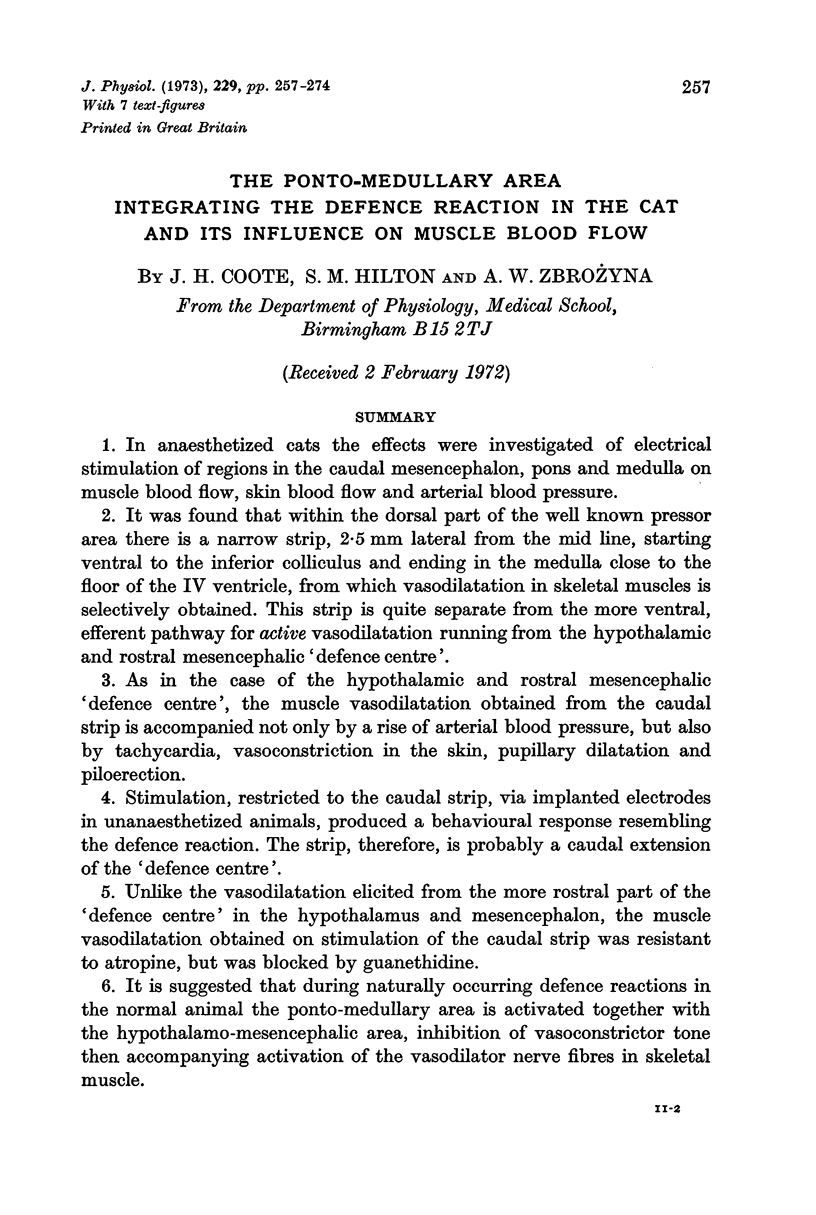

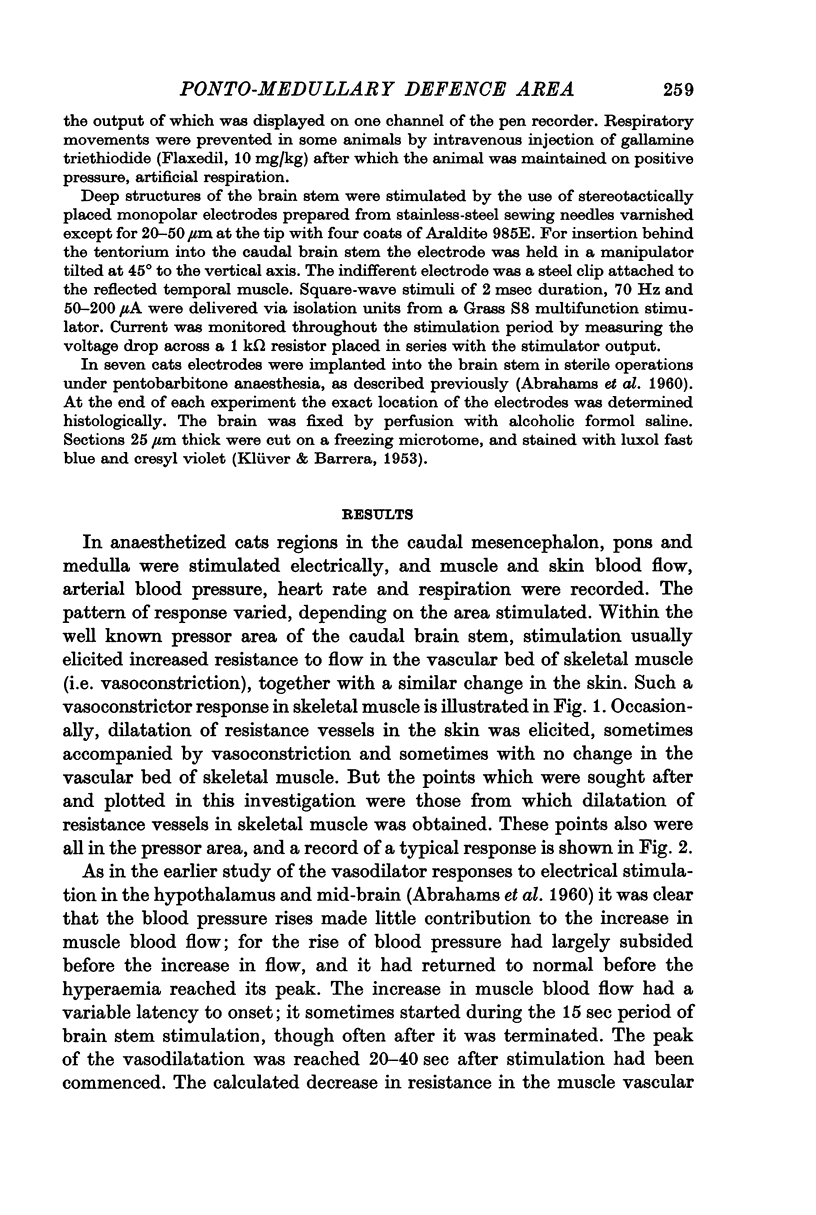

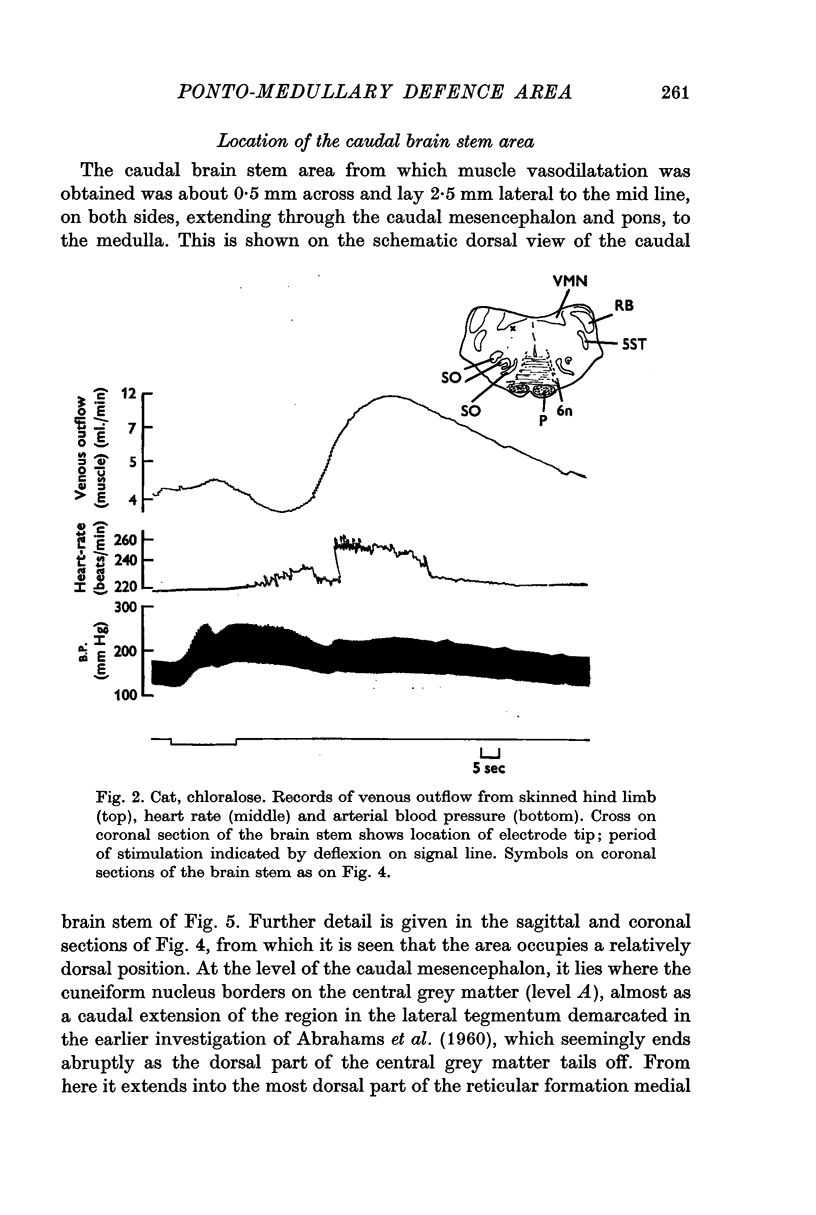

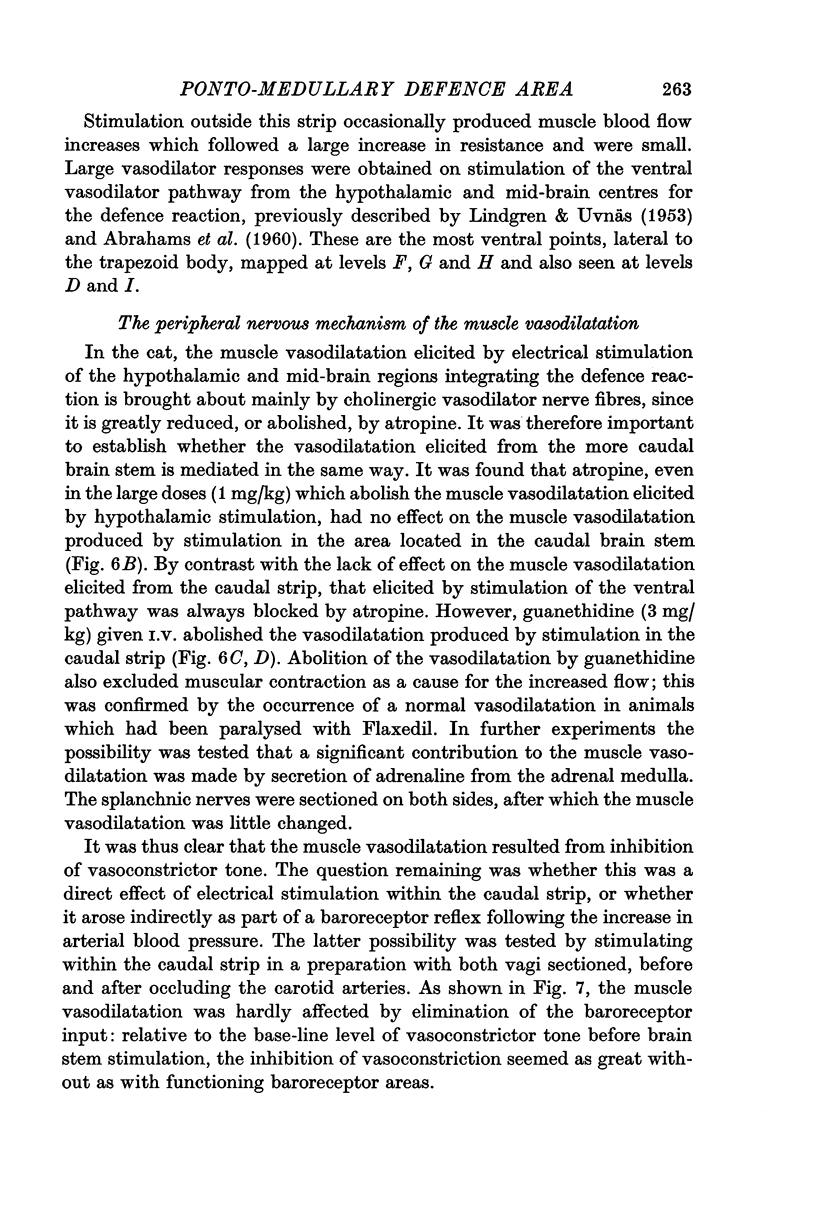
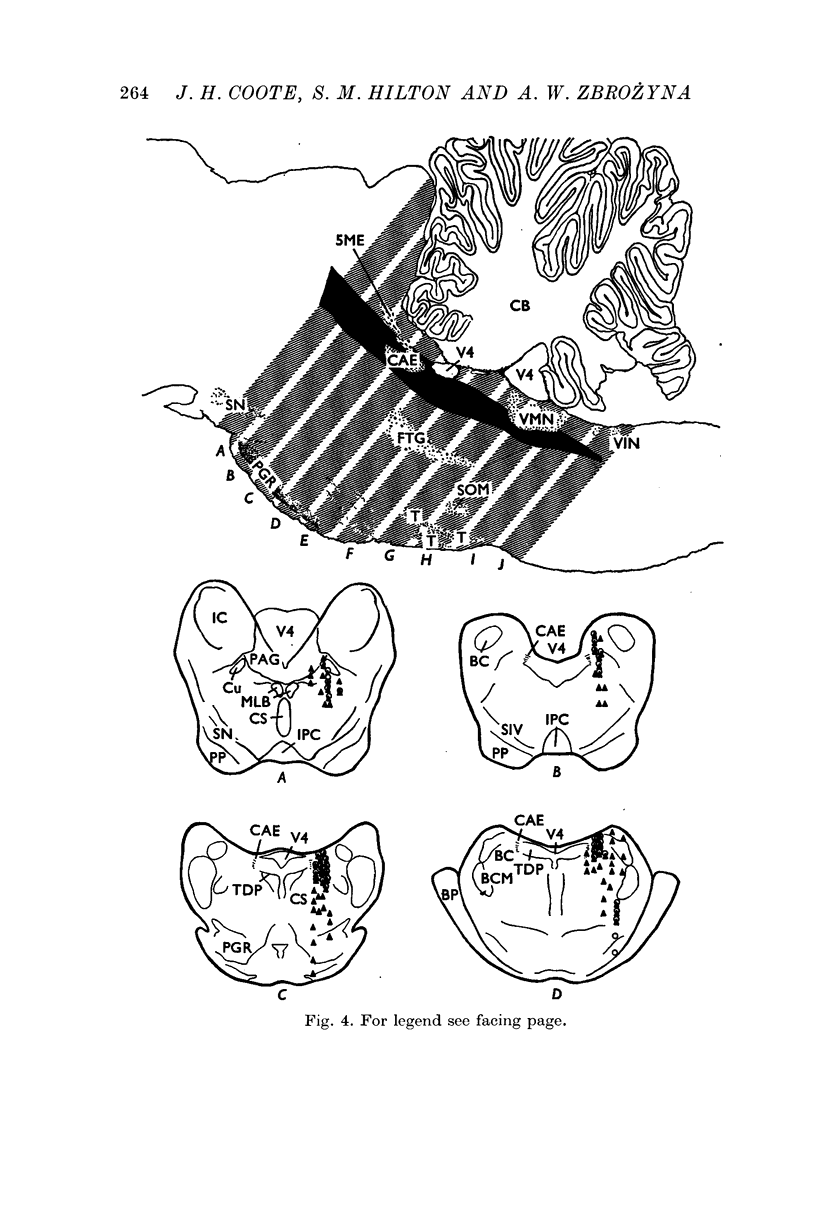
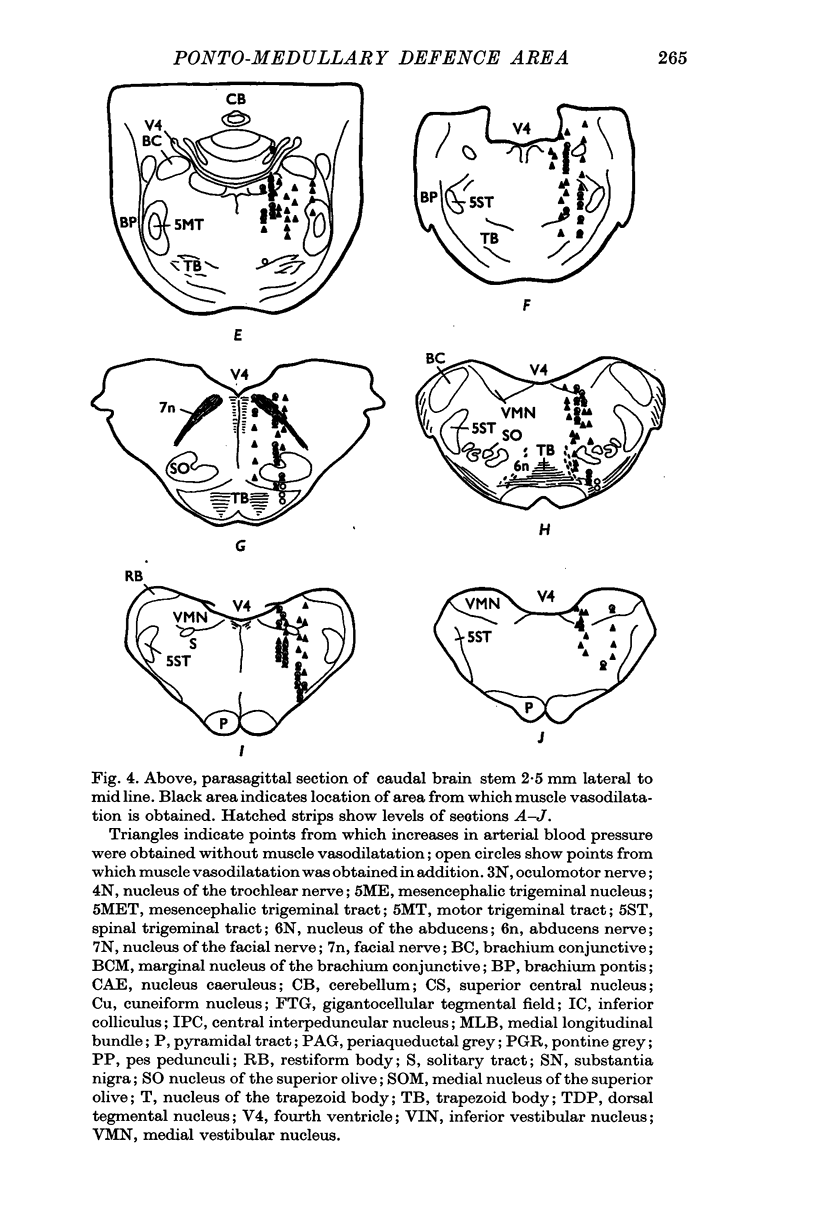

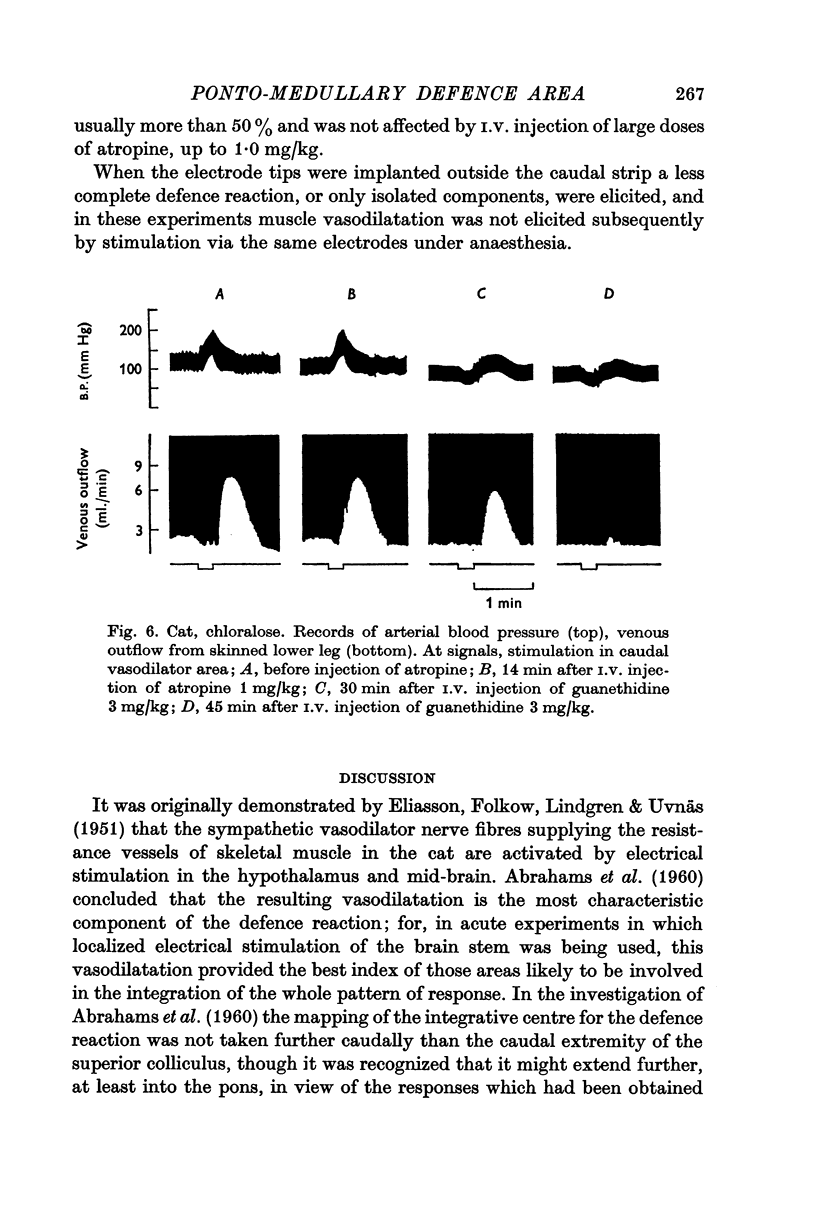

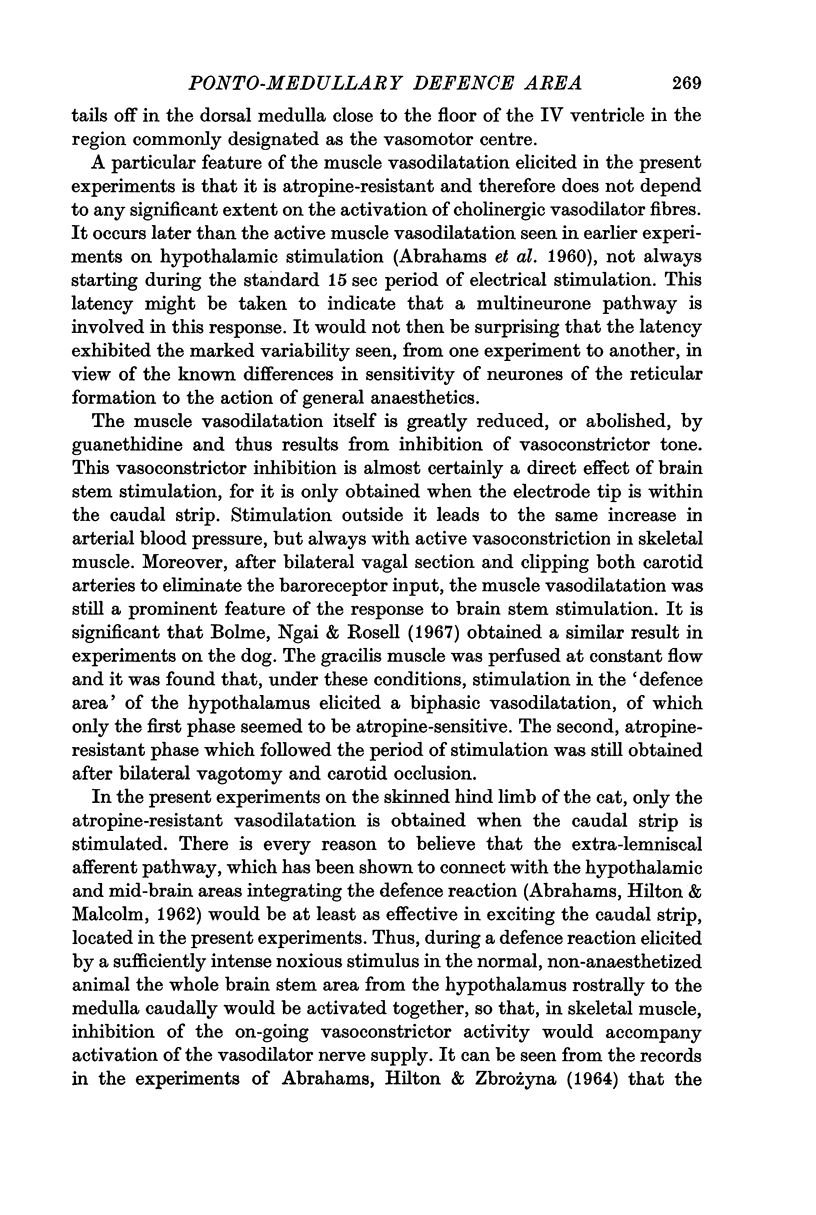





Selected References
These references are in PubMed. This may not be the complete list of references from this article.
- ABRAHAMS V. C., HILTON S. M., MALCOLM J. L. Sensory connexions to the hypothalamus and mid-brain, and their role in the reflex activation of the defence reaction. J Physiol. 1962 Oct;164:1–16. doi: 10.1113/jphysiol.1962.sp006998. [DOI] [PMC free article] [PubMed] [Google Scholar]
- ABRAHAMS V. C., HILTON S. M. THE ROLE OF ACTIVE MUSCLE VASODILATATION IN THE ALERTING STAGE OF THE DEFENCE REACTION. J Physiol. 1964 Jun;171:189–202. doi: 10.1113/jphysiol.1964.sp007371. [DOI] [PMC free article] [PubMed] [Google Scholar]
- ABRAHAMS V. C., HILTON S. M., ZBROZYNA A. Active muscle vasodilatation produced by stimulation of the brain stem: its significance in the defence reaction. J Physiol. 1960 Dec;154:491–513. doi: 10.1113/jphysiol.1960.sp006593. [DOI] [PMC free article] [PubMed] [Google Scholar]
- BACH L. M. N. Relationships between bulbar respiratory, vasomotor and somatic facilitatory and inhibitory areas. Am J Physiol. 1952 Nov;171(2):417–435. doi: 10.1152/ajplegacy.1952.171.2.417. [DOI] [PubMed] [Google Scholar]
- BARCROFT H., BROD J., HEJL B. Z., HIRSJARVI E. A., KITCHIN A. H. The mechanism of the vasodilatation in the forearm muscle during stress (mental arithmetic). Clin Sci. 1960 Nov;19:577–586. [PubMed] [Google Scholar]
- Bolme P., Ngai S. H., Rosell S. Influence of vasoconstrictor nerve activity on the cholinergic vasodilator response in skeletal muscle in the dog. Acta Physiol Scand. 1967 Dec;71(4):323–333. doi: 10.1111/j.1748-1716.1967.tb03739.x. [DOI] [PubMed] [Google Scholar]
- Bolme P., Novotný J., Uvnäs B., Wright P. G. Species distribution of sympathetic cholinergic vasodilator nerves in skeletal muscle. Acta Physiol Scand. 1970 Jan;78(1):60–64. doi: 10.1111/j.1748-1716.1970.tb04639.x. [DOI] [PubMed] [Google Scholar]
- Djojosugito A. M., Folkow B., Kylstra P. H., Lisander B., Tuttle R. S. Differentiated interaction between the hypothalamic defence reaction and baroreceptor reflexes. I. Effects on heart rate and regional flow resistance. Acta Physiol Scand. 1970 Mar;78(3):376–385. doi: 10.1111/j.1748-1716.1970.tb04673.x. [DOI] [PubMed] [Google Scholar]
- ELIASSON S., FOLKOW B., LINDGREN P., UVNAS B. Activation of sympathetic vasodilator nerves to the skeletal muscles in the cat by hypothalamic stimulation. Acta Physiol Scand. 1951 Sep 21;23(4):333–351. doi: 10.1111/j.1748-1716.1951.tb00819.x. [DOI] [PubMed] [Google Scholar]
- FOLKOW B., OBERG B., RUBINSTEIN E. H. A PROPOSED DIFFERENTIATED NEURO-EFFECTOR ORGANIZATION IN MUSCLE RESISTANCE VESSELS. Angiologica. 1964;1:197–208. doi: 10.1159/000157582. [DOI] [PubMed] [Google Scholar]
- Hilton S. M. Hypothalamic control of the cardiovascular responses in fear and rage. Sci Basis Med Annu Rev. 1965:217–238. [PubMed] [Google Scholar]
- Hilton S. M., Spyer K. M. Participation of the anterior hypothalamus in the baroreceptor reflex. J Physiol. 1971 Oct;218(2):271–293. doi: 10.1113/jphysiol.1971.sp009617. [DOI] [PMC free article] [PubMed] [Google Scholar]
- KLUVER H., BARRERA E. A method for the combined staining of cells and fibers in the nervous system. J Neuropathol Exp Neurol. 1953 Oct;12(4):400–403. doi: 10.1097/00005072-195312040-00008. [DOI] [PubMed] [Google Scholar]
- Kylstra P. H., Lisander B. Differentiated interaction between the hypothalamic defence area and baroreceptor reflexes. II. Effects on aortic blood flow as related to work load on the left ventricle. Acta Physiol Scand. 1970 Mar;78(3):386–392. doi: 10.1111/j.1748-1716.1970.tb04674.x. [DOI] [PubMed] [Google Scholar]
- LINDGREN P., UVNAS B. Activation of sympathetic vasodilator and vasoconstrictor neurons by electric stimulation in the medulla of the dog and cat. Circ Res. 1953 Nov;1(6):479–485. doi: 10.1161/01.res.1.6.479. [DOI] [PubMed] [Google Scholar]
- PROUT B. J., COOTE J. H., DOWNMAN C. B. SUPRASPINAL INHIBITION OF A CUTANEOUS VASCULAR REFLEX IN THE CAT. Am J Physiol. 1964 Aug;207:303–307. doi: 10.1152/ajplegacy.1964.207.2.303. [DOI] [PubMed] [Google Scholar]
- Schramm L. P., Bignall K. E. Central neural pathways mediating active sympathetic muscle vasodilation in cats. Am J Physiol. 1971 Sep;221(3):754–767. doi: 10.1152/ajplegacy.1971.221.3.754. [DOI] [PubMed] [Google Scholar]


